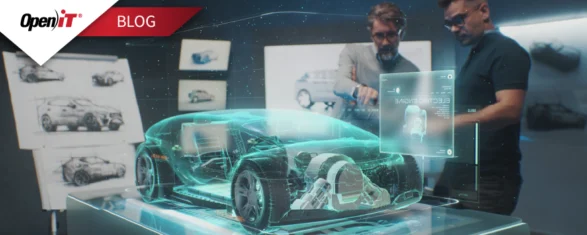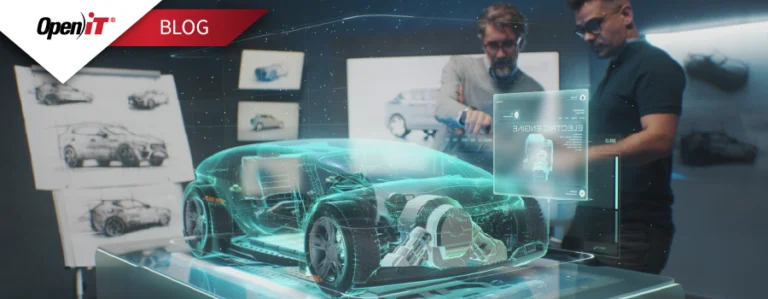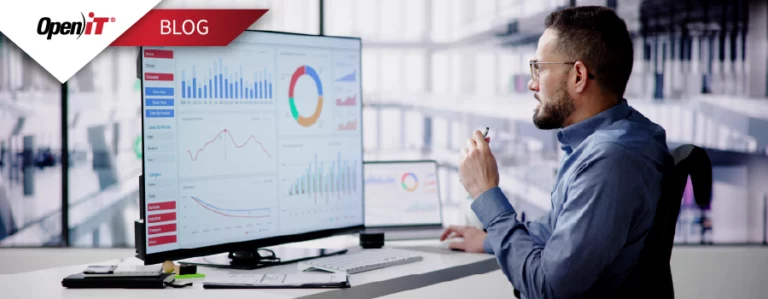Companies that strive to incorporate accountability and responsibility in their processes reap benefits that contribute positively to their goal of creating and maximizing value.
Advancements in technology make it easier for management to implement strategies focusing on bringing change to their organizational culture to improve efficiency and generate cost savings.
IT chargeback is one of those strategies.
What is IT chargeback?
One of the examples of how technology is helping shape organizations is how managers can aggregate different types of data to identify, track, and charge IT costs back to specific business activities or units.
Open iT Business Development Manager Massimo Dal Vecchio defines IT chargeback in the context of engineering software license management as a way of recovering costs by allocating software licensing costs to entities that are consuming the asset based on actual usage.
Using the above definition, the two main ideas that we want to cover in this blog are how metering the actual usage builds a culture of accountability and efficiency and how the establishment of an IT chargeback system supports cost management strategies.
Building a culture of accountability and efficiency
Transforming your company culture is a challenging task; it is not an overnight assignment, even more so if the change you are introducing requires strategies that include holding people accountable for how they are utilizing resources.
It requires well-informed and engaged employees, supportive management, well-defined policies, and a clear goal.
Identify a clear goal
Why do you want to introduce IT chargeback to your organization?
How can it add value to your operations?
Why does transparency matter if you’re hitting your production goals?
In order to start building a culture of accountability and efficiency, you need to be able to answer why the change you are proposing matters to the company.
Keep your employees engaged
The success of any new initiative requires the support of its employees as they are, essentially, the organization itself.
It is, therefore, important that employees are well-informed about how the implementation of a chargeback system will impact the way they work.
Run information campaigns. Massimo suggests drawing an analogy; for example, it can be seen as an extension of an employee’s timesheet.
Just like how timesheets are used to keep track of what we spent our working time on, a chargeback system adds information on which tools we use and for how long.
You can also add that this transparency can be used to help them become more successful in their work. It can help identify training needs or reduce the cases of license denials, which can hamper their productivity.
Gain the support of upper management
The primary objective of a chargeback project is to build a framework where the software cost for a given activity can be reported.
Massimo further explains that the cost associated with each user is not relevant; it is only a starting point for calculating the aggregated expenditure.
Therefore, he states that the value of implementing a chargeback or show-back framework is providing management with a proper account of the total expenses so that they can make educated and data-driven decisions.
The allocation of costs fosters a culture of transparency and consequently improves productivity and competitiveness.
This competitiveness is not limited to producer-producer rivalry; this can also promote healthy competition among internal customers as each department strives to manage its own costs.
Set well-defined policies
All organizations have a set of rules for sharing the costs of software tools. Massimo explains that companies that lack well-defined policies and focused data risk assigning costs using aggregations that do not match their business model.
Creating a system for IT cost reduction
Heizer et al. (2020) said that some companies compete with one another using low-cost strategies that focus on maximizing and using resources effectively.
As a manager, if you are looking to bring down the IT costs incurred from the purchase of expensive engineering software, consider implementing an IT chargeback system that enables you to get the most out of your investment.
Is there a difference between IT chargeback for general software and engineering software?
From a technical point of view, they are highly similar. However, if you’re looking at it from a business perspective, Massimo says that the differences are many and important.
Here are some of his examples.
In the case of general software:
- Payroll, bookkeeping, and in many cases, ERP systems are considered necessities by the business. Therefore, the costs of these applications are not shared among organizational units. They are an integral part of the company’s expenses for doing business. You require them no matter what.
- Office productivity tools, such as MS Office, are usually considered costs associated with each employee, similar to his/her share of office rent or the share of heating /AC costs. Costs for these services are shared among organizational units on a headcount basis.
In the case of engineering software:
- The cost of engineering software is considered a component of the project it is used for. In many cases, it becomes an element of the product cost. The price tag of this type of software compels management to recover the cost incurred to maintain the firm’s competitiveness. To properly manage the cost of engineering software, we need a more flexible framework that can provide better granularity on how usage-based costs are allocated. This is why the implementation of a chargeback framework fits companies that rely heavily on this type of software.
Build your organization’s trove of data
In order to implement a fair and effective chargeback system, data accuracy is a must.
That means we should not be just looking at one set of data. In the context of software license management, this means getting the true active usage from different sources, ensuring the correct inventory of the number of users and devices, determining the type of license agreement, and retrieving the right cost information, among others.
Establish your IT chargeback methodology
Although we cannot discuss the IT chargeback model extensively in this blog, here is a quick overview of the basic elements that you need to start making one.
These are the cost generator, cost center, allocation model, and of course, the invoice report.
Cost generators – Just from the term itself, one can instinctively know that this covers the assets that bring costs to the organization.
Identify the facility, servers, software, staff, and other IT assets from which data will be collected.
Cost centers – These can be departments, projects, user groups, or any other groups or entities where the budget is allocated.
Invoice report – At a minimum, this should include the asset name, the allocation model used, the unit of measurement, and the cost of the asset.
Allocation models – This is your IT chargeback formula, and it varies depending on an organization’s needs.
It includes identifying the different metrics, such as the type of licensing agreement or the volume of storage used.
The frequency of billing should also be determined, as well as the different filters that need to be applied based on the customization needed for each project.
Despite the advantages one can get from IT chargeback, some organizations still struggle with its implementation.
Massimo states that this is because a chargeback framework goes beyond simply tracking usage.
According to him, managers need to link the asset usage to its purchasing cost, and that often requires a revisitation of the costing model currently in place.
This complexity requires an expert who is highly knowledgeable about the topic. You can have a solution that can track your usage; however, without an expert who can combine and translate the data to relevant figures, there could be delays in setting up the framework, or worse, disputes due to incorrect calculations.
This knowledge is not readily available on the market, so a vendor equipped with years of industry experience is a preferable option.
Open iT works along with its customers to configure the best solution for their needs.
Considering IT showback instead of IT chargeback
Some companies need time to gather the data and build their case to support their chargeback initiatives.
Managers who want to take things slow should consider adopting a showback system instead. Massimo explains that in software license management, IT showback and IT chargeback are highly similar to one another.
Both start from the same inputs: software utilization, software cost, and the aggregation of data that will match the customer’s needs. However, the difference lies in how the information is used.
In chargeback, the acquired data is used for billing the users of the IT assets with the goal of recovering the cost sustained for making the tools available. The process ends with a financial transaction with the organization’s internal/external customers.
On the other hand, IT showback is the preferred option when the goal is to simply create awareness in the organization about the costs involved in using the tools, but it does not generate any actual financial transactions.
Managers can then use this additional information to improve their efficiency and create cost-reduction strategies.
If you’re interested in adding IT chargeback or showback to your IT asset management program, schedule a complimentary 30-minute consultation today with Massimo Dal Vecchio.
Open iT has many years of experience in delivering this kind of solution, working with customers in many different industry verticals.






